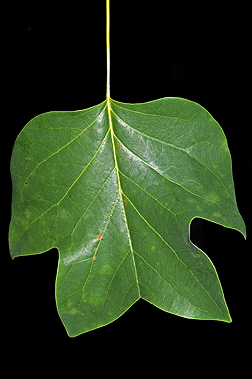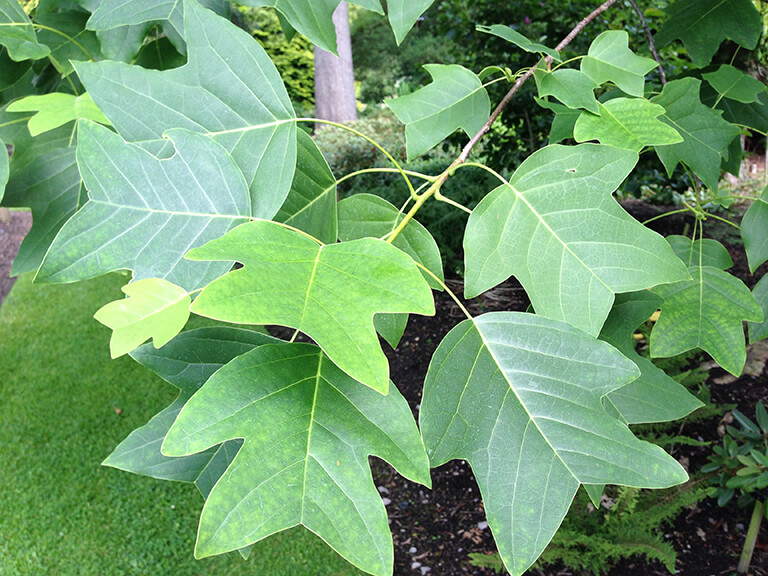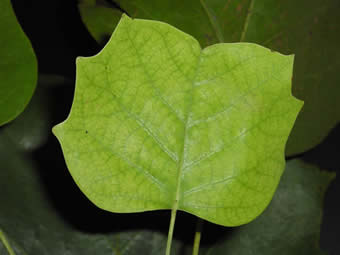tulip tree leaf venation
Leaf Venation Lobing Shape Margins Leaf lobing Pinnately lobed - with the lobes. African Tulip-Tree1 Edward F.
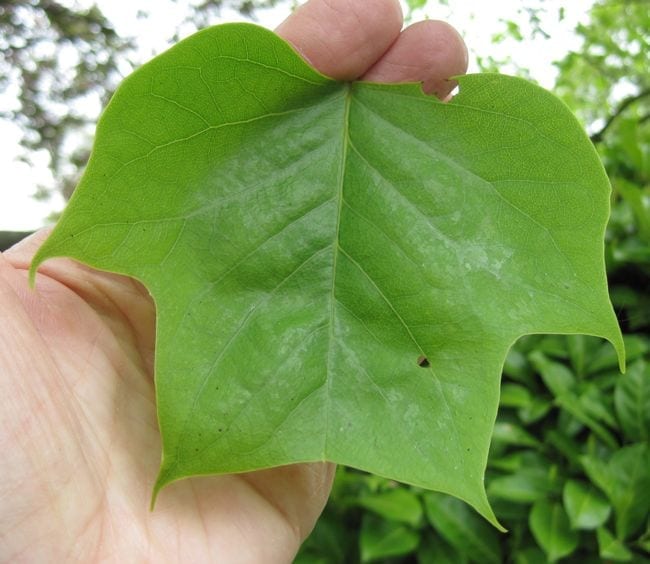
Tulip Tree Tree Guide Uk Tulip Tree Identification
Examples of trees with compound leaves include ash trees walnut trees hickory trees and horse chestnut trees.
. It is the largest member of the magnolia family in New England and one of the tallest hardwoods in eastern North America with a tall straight trunk reaching up to 200 feet 65m in height. Each leaf is simple wide with venation. The two major types of venation parallel and reticulate can both be subdivided and a third distinct type of venation is found in ginkgo trees.
Conceived by preeminent landscape architect Calvert Vaux in 1895 Tulip Tree Allée is the most historic and distinguished tree planting at the Garden. 15 21 m tall and up to 40 ft. The tree with its conical crown grows 50 to 70 ft.
Deciduous foliage of the Tulip Poplar tree turns a beautiful golden yellow in the fall. In 2020 Garden arborists removed five trees from the Tulip Tree Allée that had naturally degenerated. Tulip tree is a large stately tree with a long clear trunk and a pyramidal crown.
Perfect showy resembling a large tulip but high in the tree 2 12 inches long with yellow-green petals and an orange corolla appearing in late spring to early summer. Dark green and glossy on top paler green underneath. If needed a product called ClayMend and similar products can help to improve the pH of red clay soil.
Leaf type and persistence. Leaf type and persistence. Sear tulip tree leaf turned on its side isolated on white background.
It is 168 feet tall. Leaves are alternate simple 46 inches long and broad tip notched or V-shaped at the center with 2 lobes near the tip and 2 or 4 lobes on the lower sides. As a direct result of this care the tulip trees have thrived and exceeded their expected 100-year life span in New York Citys urban setting.
The leaves are lobed and the flowers are yellow. Bright green on top paler green underneath. There are a number of types of compound leaves and knowing about them can help make tree identification easier.
The leaves have an alternate arrangement the leaf type is simple the leaf margin is lobed. Entire the leaf venation is pinnate the leaf color is green and in the fall they turn yellow and the leaf blade length is 48 inches. Leaf veins serve as small conducting vessels in trees.
Magnoliaceae -- Magnolia family. Due to its size it is best located in large open landscapes and is generally not suited for small. Needles and scale of evergreens are also considered.
Oak and cherry tree leaves have pinnate venation. Types of Leaf Simple Compound Single leaf blade Leaf has number of leaflets eg mango peepal Pinnately Palmately Compound Compound Neem rose Silk cotton Venation. Tuliptree is easy to remember for its leaves which are shaped roughly like tulip flowers with bases and square-lobed tops.
A Tulip Tulipa a monocot has leaves with parallel venation. One seed leaf parallel venation petals in groups of 3 Dicots two seed leaves netted venation petals in groups of 4 or 5. Pinnate leaves palmate leaves and double pinnate leaves.
Yellow-poplar Liriodendron tulipifera also called tuliptree tulip-poplar white-poplar and whitewood is one of the most attractive and tallest of eastern hardwoodsIt is fast growing and may reach 300 years of age on deep rich well-drained soils of forest coves and lower mountain slopes. The Kentucky Champion tree is in Beaver Creek McCreary county. Tulip tree leaf venation Monday March 7 2022 Edit.
Its stately rows of tulip trees were planted along the drive leading to the Library Building beginning in 1903. Cassia leaf has reticulate venation. Along with it you will also want to add compost.
Tulip poplar is currently the state tree of Kentucky. The Tree is a deciduous tree it will be 5 - 20 m 16 - 66 ft high. Types of compound leaves.
The tree likes Sun to half-shade at the location and the soil should be permeable soils. 4 to 8 inches. It can but you may need to prep the soil first.
Made up of 68 pairs leaflets and one terminal leaflet. Alternate simple palmately veined orbicular 4-lobed with an entire margin 4 to 8 inches long notched to flat top. It occurs in all counties in Kentucky on rich well-drained soils in mixed mesophytic associations.
For nearly 120 years Garden horticulturists have worked to nurture preserve and. A native of tropical Africa this large upright 50 to 60-foot tree has a dense 40-foot-wide crown and one-and-one-half-foot-long pinnately-compound evergreen leaves composed of four-inch leaflets Fig. Entire the leaf venation is pinnate the leaf color is green and in the fall they turn yellow and the leaf blade length is 48 inches.
The pH of the soil should be between 45 and 75 with 66 to 75 being the optimal pH for a tulip poplar. Chinese tulip trees thrive in USDA zones 6 through 9. The term venation when used in botany refers to the distribution of veins in the leaf blade.
Leaves turn clear yellow in autumn. Close up one backlit orange autumn fallen tulip tree leaf in grass on the ground low angle view Closeup of dew water drops on tulip tree leaf move in wind and beautiful sun reflections. Tree and Leaf Identification.
Liriodendron tulipifera or Yellow Poplar is a deciduous tree that may grow 90 to 120 feet tall and takes its name from its greenish-yellow heartwood and attractive tulip-like flowers. Their shape is unusual the so-called lyre. What is type of venation in cassia leaf.
Gilman and Dennis G. Leaves Leaves are the best and often the easiest way to identify a tree. Eg- Maize Parallel Venation and Reticulate Venation If leaves doesnt have stalk then Plant is monocot.
Tulip poplar is one of the tallest of the native American hardwoods. The veins extend from the midrib to the leaf margin. Dicotyledons or plants with two seed leaves.
From left to right. Somewhat shaped like a tulip light green to green. Branches have a simple alternate leaf pattern with pinnate leaf venation and 4 8 inch orbiculate shaped leaves that are a bright green on the surface and paler beneath.
Kentucky was home to some of the most. It looks a bit like a tulip flower. In spite of this special care the tulip trees have been experiencing gradual decline.
Consists of four short lobes with an inversely cordate notched apex. The Chinese tulip poplaralso called the Chinese whitewoodis a tall deciduous tree with shiny lobed leaves small tulip-shaped flowers and light gray fissured bark. Another type of parallel venation occurs in plants such as.
Margin entire lobes pointed. Bright green on top paler green underneath. The Tulip Tree is botanically called Liriodendron tulipifera.
Tulip trees can be identified by the shape of their leaves. This type of venation is generally found in dicot leaves. Leaflets are 4 inches.
There are two classifications you need to know for tree identification.

Tulip Poplar Or Tuliptree Liriodendron Tulipifera Leaves With Their Typical Tulip Shape Stock Photo Image Of Fresh Beautiful 215284226
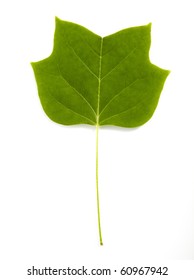
Tulip Tree Leaves Images Stock Photos Vectors Shutterstock
Plant Information Center Liriodendron Tulipifera

What S In A Leaf Arnold Arboretum Arnold Arboretum
Tulip Tree Liriodendron Tulipifera
Enh 522 St363 Liriodendron Tulipifera Tuliptree
Thinking Of Planting A Tulip Poplar Tree Gardening Q A With George Weigel Pennlive Com
Tulip Tree Liriodendron Tulipifera

The Tulip Tree Halifax Tree Project
Plant Information Center Liriodendron Tulipifera

Liriodendron Tulipifera Tulip Poplar Tulip Tree Yellow Poplar Yellow Poplar North Carolina Extension Gardener Plant Toolbox

Yellow Poplar Natural Resource Stewardship
Tulip Tree Liriodendron Tulipifera
Tulip Tree Liriodendron Tulipifera

Examples Of Leaf Images In The Dataset Released By 9 A B Download Scientific Diagram
